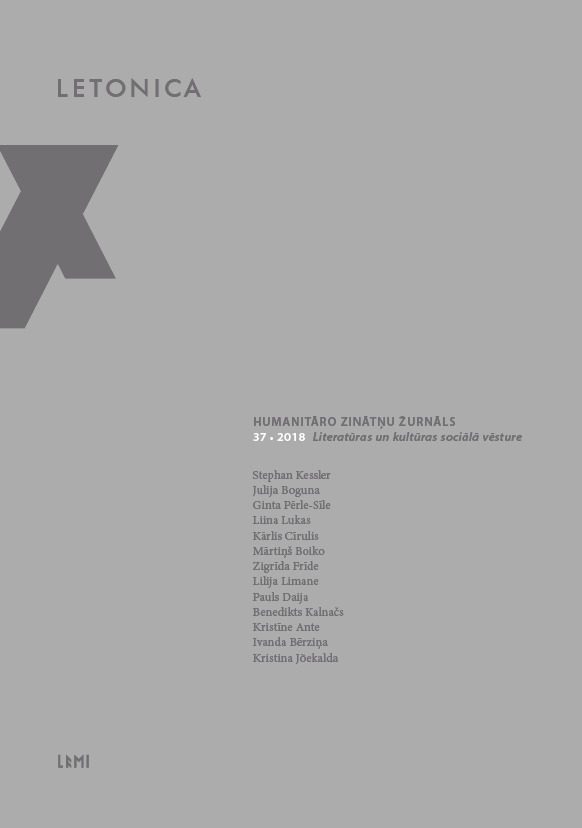Dziesmu virknes. Problēma un fenomena refleksija 19. un 20. gs. pētnieciskajā literatūrā
Strings of Songs. The Problem and Reflection on the Phenomenon in the Research Literature of the 19th and 20th Centuries
Author(s): Mārtiņš BoikoSubject(s): Literary Texts, Museology & Heritage Studies, Customs / Folklore, Classification, Oral history
Published by: Latvijas Universitātes Literatūras, folkloras un mākslas institūts
Keywords: strings of songs'; classification of folk songs; the history of Latvian folklore studies; the history of the 19th century ideas in Latvia
Summary/Abstract: In the article an understudied field of research in Latvian classical folk song is explored, focusing on a mostly unrecognized large-scale problem: in the editions of folk songs the most extensive category is made of the so-called short songs – mostly quatrains and six line, rarely eight-line stanzas that are self-contained in terms of content and poetic form. It is clear that in practice they did not exist in an isolated way as self-sufficient, independent entities. However, there is very little known about the way the short songs were combined and sequenced to strings. Our knowledge on this subject is inexcusably small: sporadic statements by some collectors and researchers, a couple of short publications, where the strings have been examined next to other questions, and only one large study entirely devoted to that phenomenon (see: Vaira Vīķis-Freibergs Sink or Swim. On Associative Structuring in Longer Latvian Folksongs, 1997). The short songs however (both in customs and beyond them) “lived” in strings – varying and changing each time being performed. The strings were their “way of life” and a factor significantly influencing semantics. Baron’s and other multi-volume editions of Latvian classical folk songs are huge depots of building blocks of strings that have been classified according to their thematic parameters, yet their ability to express anything about their life in practice is very limited. The deplorable condition within the study of the strings is the consequence of the continuous reproduction of the 19th centuries research dispositions. The article provides an insight in the origin and history of the problem. Its aim is to facilitate polemic and encourage research.
Journal: Letonica
- Issue Year: 2018
- Issue No: 37
- Page Range: 82-108
- Page Count: 27
- Language: Latvian

